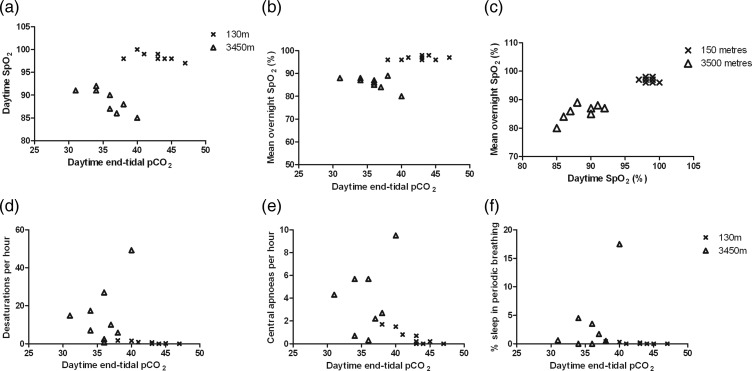Figure 1.
Effect of daytime end-tidal carbon dioxide on other respiratory measurements. (a) Daytime haemoglobin oxygen saturation (SpO2, %); (b) mean overnight SpO2; (d) number of desaturations per hour; (e) number of central apnoeas per hour; (f) percentage of total sleep time in periodic breathing each plotted against daytime end-tidal partial pressure of carbon dioxide (pCO2) for the nine children studied at 130 m (crosses) and 3500 m (open triangles); (c) relationship between mean overnight and daytime SpO2. Mean overnight SpO2 was significantly correlated (R2 0.49, p=0.035) with daytime values at 3500 m (Δ), whereas there was no correlation (R2 0.04, p=0.626) at 130 m (x).

